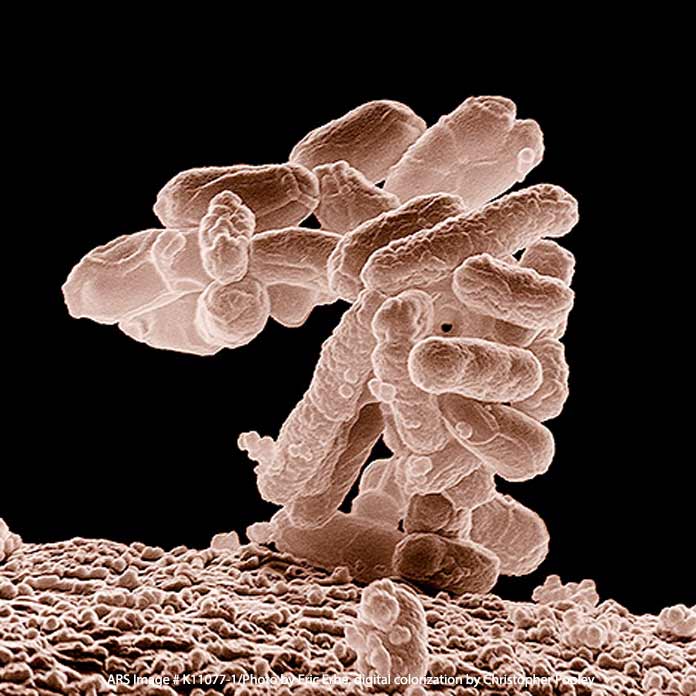At least nine people are sick with E. coli infections after eating at the Worthy Burger restaurant in South Royalton, Vermont. While some of those people have recovered, health officials state that there is an ongoing risk of infections. Those sickened ate rare or undercooked hamburgers at that restaurant.

E. coli bacteria is found in the guts of ruminant animals such as cows. When those animals are slaughtered, the bacteria gets onto the muscle. Many cuts of beef are contaminated on the surface with E. coli bacteria. When that beef is ground to make hamburger, the bacteria is mixed all through the product. Then if the meat is not fully cooked, the bacteria can survive and make someone sick.
Worthy Burger restaurant was closed from September 17 through September 21, 2015. Management changed suppliers, according to news reports. Public health officials recommended that the restaurant use a food thermometer and cook burgers to safe internal temperatures.
We don’t know if Worthy Burger has changed their cooking method or if they have warned their customers about the possible dangers of eating undercooked ground beef. According to the Penn State Food Safety Blog, Worthy Burger says that its burgers are served pink in the middle. Pink burgers are usually not cooked to a safe internal temperature of 160°F.
Latest reports state that Shiga toxin, the compound produced by E. coli bacteria that makes people so sick, was found in an unopened package of beef at the restaurant. There are six confirmed and three probable case-patients with E. coli infections linked to Worthy Burger. Eight of the nine diners ate ground beef at Worthy Burger between the end of August and the middle of September. Officials are trying to discover the slaughterhouse where the beef was produced.
This type of infection can be very serious. E. coli bacteria can produce Shiga toxins, which enter the bloodstream and can destroy the kidneys. One complication of an E. coli infection is called hemolytic uremic syndrome (HUS). Children under the age of 5 are most susceptible to HUS, although adults can develop it as well.
The symptoms of an E. coli infection include severe stomach and abdominal cramps, diarrhea that may be bloody and/or watery, a mild fever, and possible nausea or vomiting. The symptoms usually begin three to four days after exposure to the bacteria. Most people do see a doctor when they contract this infection, since symptoms are so severe and painful.
The symptoms of hemolytic uremic syndrome include bloody diarrhea, painful cramps, irritability, and lethargy. Low or no urine output, pale skin and easy bruising, skin rash, and jaundice may follow. If you or a loved one is experiencing these symptoms, it is critical to get to a doctor as soon as possible. HUS can be fatal.